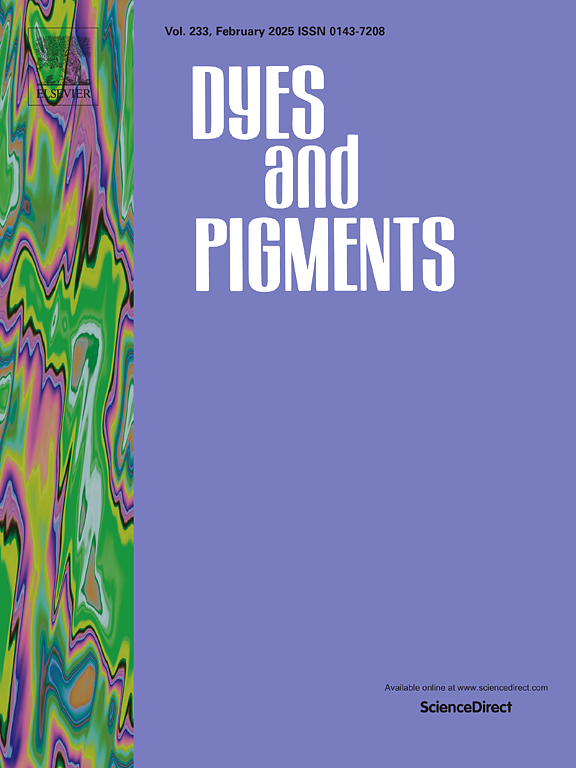Carbon black doped amorphous photonic crystal pigments with highly saturated structural color
IF 4.1
3区 工程技术
Q2 CHEMISTRY, APPLIED
引用次数: 0
Abstract
The work reported a simple method for preparation of the powdery amorphous photonic crystal pigments with highly saturated colors. Monodispersed nanospheres P(St/MAA) were synthesized by soap-free emulsion polymerization using styrene (St) and methacrylic acid (MAA) as the monomers, and ammonium persulfate (APS) as the initiator to construct photonic crystals (PCs). P(St/MAA) PCs were doped with carbon black (CB) modified by cationic surfactant cetyltrimethylammonium bromide (CTAB) to enhance color saturation. When CTAB concentration increased to 4.75 mmol/L, the arrangement of the nanospheres P(St/MAA) doped CB modified with CTAB (CTAB-CB) transitioned from long-range to short-range ordering because of the strong electrostatic attraction between negatively charged P(St/MAA) and positively charged CTAB-CB, and the resulted PCs became amorphous photonic crystals (APCs). Whereas, the APCs exhibited highly saturated structural color due to the suppression of incoherently scattered light by CB. The short-range ordering of APCs could eliminate angle dependence. In addition, micron mica were added as pearlescent fillers to prepare CTAB-CB-mica-P(St/MAA), which improved the lightness and adhesion of the APCs as pigments. The P(St/MAA) nanospheres with tunable particle sizes were obtained by regulating the monomer concentration in soap-free emulsion polymerization. These P(St/MAA) nanospheres as building blocks constructed the APCs pigments with controllable structural colors such as blue, cyan, green, and red. CB modified with CTAB, mica and P(St/MAA) were mixed in aqueous solution by sonication, centrifugation, then dried and ground, the APCs powders were obtained and could be applied directly as pigments without PCs assembly further. These highly saturated APCs pigments have potential applications in the field of cosmetics.
求助全文
约1分钟内获得全文
求助全文
来源期刊

Dyes and Pigments
工程技术-材料科学:纺织
CiteScore
8.20
自引率
13.30%
发文量
933
审稿时长
33 days
期刊介绍:
Dyes and Pigments covers the scientific and technical aspects of the chemistry and physics of dyes, pigments and their intermediates. Emphasis is placed on the properties of the colouring matters themselves rather than on their applications or the system in which they may be applied.
Thus the journal accepts research and review papers on the synthesis of dyes, pigments and intermediates, their physical or chemical properties, e.g. spectroscopic, surface, solution or solid state characteristics, the physical aspects of their preparation, e.g. precipitation, nucleation and growth, crystal formation, liquid crystalline characteristics, their photochemical, ecological or biological properties and the relationship between colour and chemical constitution. However, papers are considered which deal with the more fundamental aspects of colourant application and of the interactions of colourants with substrates or media.
The journal will interest a wide variety of workers in a range of disciplines whose work involves dyes, pigments and their intermediates, and provides a platform for investigators with common interests but diverse fields of activity such as cosmetics, reprographics, dye and pigment synthesis, medical research, polymers, etc.
 求助内容:
求助内容: 应助结果提醒方式:
应助结果提醒方式:


